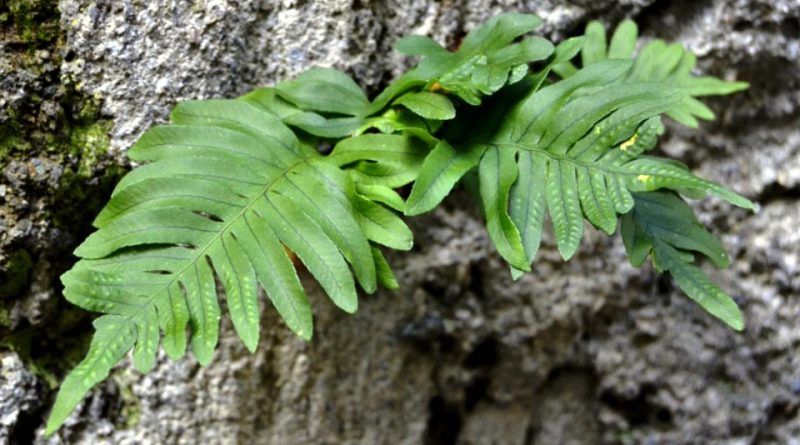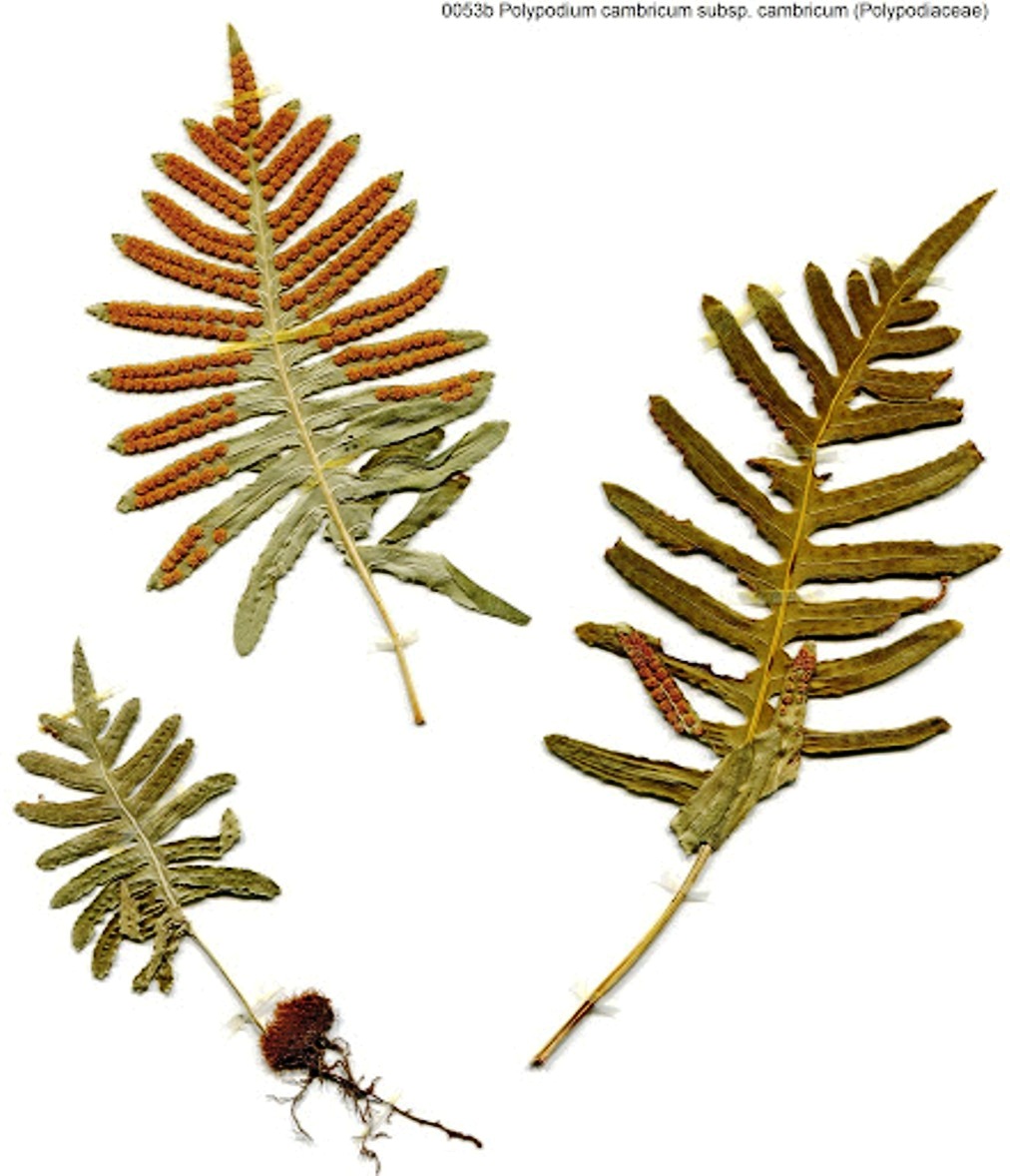Polypodium cambricum
Polypodium cambricum
The southern polypody, limestone polypiody or Welsh polypody (Polypodium cambricum L.) is a vascular species belonging to the family of Polypodiaceae.
Systematic –
From a systematic point of view, it belongs to the Eukaryota Domain, Plantae Kingdom, Pteridophyta Division, Polypodiopsida Class, Polypodiales Order, Polypodiaceae Family and therefore to the Genus Polypodium and to the Species P. cambricum.
The terms are synonymous:
– Polypodium australe Fée;
– Polypodium cambricum subsp. australe (Fée) Greuter & Burdet;
– Polypodium cambricum subsp. serrulatum (Schinz ex Arcang.) Pic. Serm .;
– Polypodium serratum (Willd.) Saut .;
– Polypodium vulgare subsp. serrulatum Schinz ex Arcang ..
Etymology –
The term Polypodium comes from the Greek prefix πολυ- poly- very, many and from πούς, ποδός poús, podόs foot: probably for the numerous rootlets of the rhizome.
The specific epithet cambricum comes from Cambria in the Latin form of the Welsh Cymru, that is, Wales: Welsh.
Geographical Distribution and Habitat –
The southern polypody is a species centered in the area of the Mediterranean coasts, but with extensions to the north and east (area of the Vine), therefore with Euro-Mediterranean-subatlantic distribution and present in all regions of Italy.
Its habitat is that of shady places, such as rocks, cave caves, old walls, ruins, epiphyte on the trunks of old trees, etc., where it grows in the altimetric range between 0 and 1600 meters above sea level.
Description –
Polypodium cambricum is a perennial fern that grows between 10 and 60 (80) cm.
The rhizome is filiform, scaly, with a sweetish taste similar to licorice.
The leaves have a triangular to ovate outline, with pinnate foil and toothed segments or engraved on the margins, the lower ones projected forward, dry in the summer. Sori circular or elliptical, yellow, arranged in two parallel rows on the lower page of the pinnules.
The spores are reniform, with a warty perisporium.
The scorification is between November and May.
Cultivation –
The southern polypody is a fern that grows spontaneously in shady environments, such as rocks, cave caves, old walls, ruins, epiphyte on the trunks of old trees, etc.
The plant can be found up to a maximum of 1600 meters above sea level.
Uses and Traditions –
The southern polypody, also known as limestone polypiody, or Welsh polypody, is a fern whose rhizome can be used, cleaned of the earth and scales.
This chewed recalls the flavor of licorice.
It is not a real food plant. The use of this fern, as a surrogate for licorice, is more of a panacea to overcome difficult moments due to fatigue and water shortages.
Preparation method –
The harvest period of the rhizome of the southern polypodium is between November and May.
In some places, dry rhizomes are used as a substitute for licorice sticks.
Guido Bissanti
Sources
– Acta Plantarum – Flora of the Italian Regions.
– Wikipedia, the free encyclopedia.
– Treben M., 2000. Health from the Lord’s Pharmacy, Tips and experiences with medicinal herbs, Ennsthaler Editore
– Pignatti S., 1982. Flora of Italy, Edagricole, Bologna.
– Conti F., Abbate G., Alessandrini A., Blasi C. (edited by), 2005. An annotated checklist of the Italian vascular flora, Palombi Editore.
Warning: Pharmaceutical applications and alimurgical uses are indicated for information purposes only, they do not in any way represent a medical prescription; therefore, no responsibility is accepted for their use for healing, aesthetic or food purposes.


